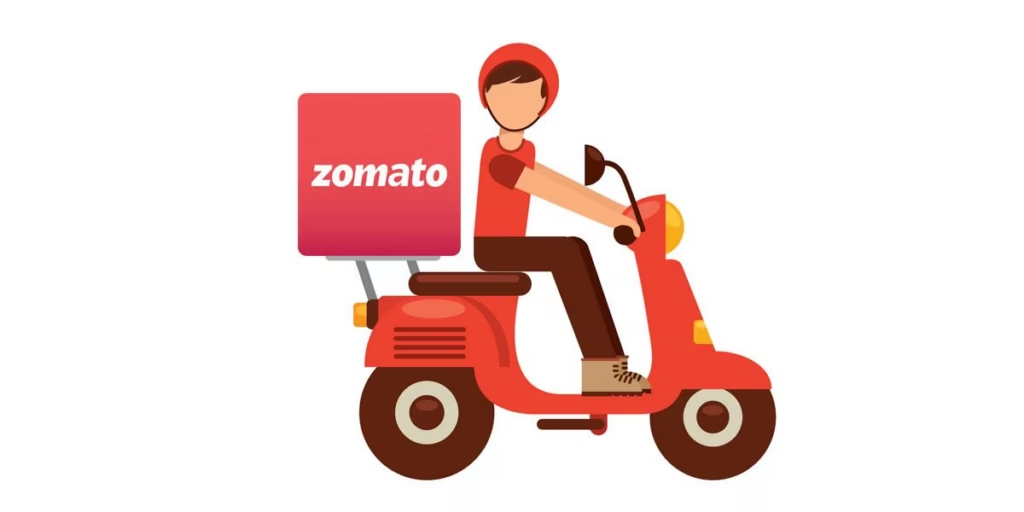Zomato is a restaurant and food delivery discovery platform that operates in more than 500 cities globally. Zomato was founded in 2008 by Deepinder Goyal and Pankaj Chaddah. In this article, we will understand how the business of Zomato functions, and the ways through which Zomato makes money.

Now the Zomato business model is a platform business. It connects customers with restaurants and food establishments, allowing customers to place orders through the Zomato app or website. Zomato has multiple avenues of revenue which include commission fees, delivery fees, advertising and subscription fees.
Listing and Commission
Zomato allows restaurants to get listed on its platform and charges them a service commission fee on each order that the restaurant receives using Zomato. The commission fee from restaurant to restaurant and location to location. Typically, Zomato gets a commission fee of about 15-20% of the order value.
Food Delivery
Zomato is a food delivery app working with restaurant owners to get food delivered to customers. It is a common sight that Zomato takes a delivery charge from the customers, and it is different for other locations and the restaurant. Delivery charge generally varies between ₹20 and ₹50.
Advertising
Zomato earns revenue from advertisements that let restaurants and food brands promote their offerings on the platform. Zomato provides a range of advertising opportunities, such as sponsored listings, banner ads and video. Advertising revenue is usually based on a cost-per-click (CPC) or cost-per-thousand (CPM) impressions.
Zomato Gold
Zomato Gold is a subscription service by Zomato which allows customers to get exclusive benefits like discount, free delivery, and other benefits at listed restaurants. Delhi, Mumbai and Bengaluru are among the multiple cities where customers can avail Zomato Gold status. How much does Zomato Gold subscription fee after trial period?
Revenue Streams
Zomato has different the revenue streams from its business, they are:
The commission fee: Zomato charges a commission fee to every order that is placed through its platform.
Delivery Charges: Zomato levies a delivery fee on the customers, which can range depending on the area and the restaurant.
Advertising revenue: Zomato makes money through advertising as well, enabling restaurants and food brands to market themselves on its platform.
Zomato Gold Subscription Fees: Zomato says it earns revenue from subscription fees for its Zomato Gold service.
Key Partnerships
Zomato collaborates with many restaurants, food outlets, and delivery services. Various major partnerships are as follows:
Restaurants: Zomato works with more than 1.5 million restaurants around the globe ranging from big names such as Domino’s, Pizza Hut, and McDonald’s.
Delivery Partners: Zomato has created a network of delivery partners, such as other delivery services and Zomato’s own delivery fleet to deliver food orders.
Zomato has collaborated with many food brands and restaurants to advertise Zomato on their platform.Zomato has to get paid for advertising their platform.
Key Activities
The major activities of Zomato comprise:
Platform – Zomato spends on platform development and upkeep — its website and mobile app.
Marketing and Advertising: Zomato markets and advertises its platform and services.
Partnership Development Partnering with Restaurants: Zomato works with restaurants to ensure their place on the platform.
Users Usability: Zomato provides its users with usability such as complaints and issues.
Key Resources
Core Resources of Zomato:
Technology Infrastructure: The technology infrastructure such as complete platform and mobile app of Zomato is the key resource.
Key Resources: The partnership network of Zomato with restaurants, delivery businesses, and advertisers.
Marketing and Advertising Budget: A very important resource Zomato provides to the market to promote its platform and service.
Zomato’s Employee/ Developer/ Marketer/ Customer Support Agent Team (Human Resources):
Challenges and Opportunities
Zomato has some challenges going on for it:
Competition: Zomato has strong competition from rival food delivery apps like Swiggy, Foodpanda and Uber Eats.
Regulatory Challenges: Zомато is subject to regulatory challenges like compliance with food safety regulations and taxation laws.
Operations: Zomato needs to manage its logistics and delivery operations effectively, which includes timely delivery of food and handling of customer complaints.
Despite these challenges, Zomato has opportunities for growth, such as:
Opportunity to Peep into new markets: Zomato has an opportunity to expand its services in new markets like tier-2 and tier-3 cities in India.
Expanding its Restaurant Network: Zomato can expand its restaurant
